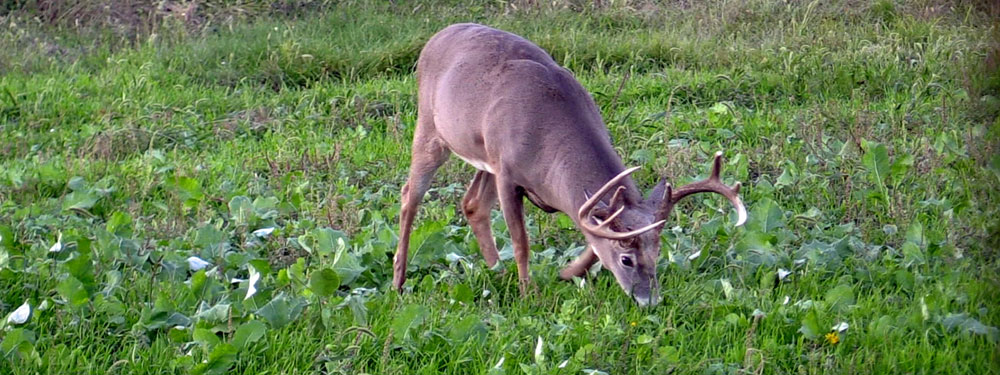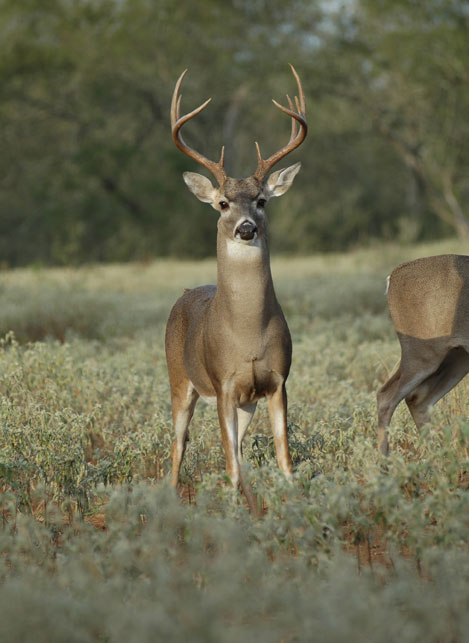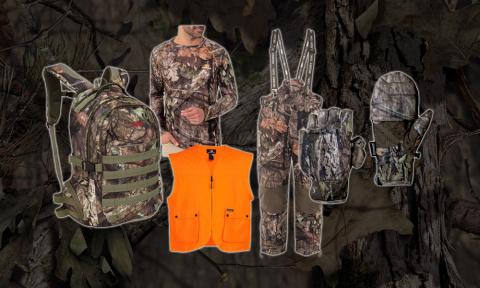Todd Amenrud

Whether it’s while in your treestand or when viewing trail camera photos, it is important to learn to judge age by looking at an animal. Most gamekeepers feel that harvest decisions should be made based on the animal’s age not antler size. Antler size is one of the details we use to help determine age, but only one in a long list of aspects like body size and shape, muscle tone, the appearance of certain features, etc. You will develop a more effective management plan if you can distinguish a buck’s age by assessing it in a photo or by sight. The following characteristics are fairly consistent for whitetails throughout their range. (Much of the information is courtesy of the QDMA.)

To begin, let’s stop saying “and-a-half” after the age of a whitetail. It’s a given! If animals are born during the spring, and it’s during the fall hunting season, they obviously will be nearest the “half year” of whatever year they are in.
One Year Old
These animals are easiest to identify, especially the bucks. They are delicate-looking compared to older animals with a thin neck. They resemble a doe with antlers and legs that appear long compared to the body giving them a slim, lanky appearance. They have a distinct line of separation between their neck and shoulders and little muscle definition. They have a thin waist, and they may have slight staining in their tarsal glands during the rut. Their antlers can be extremely inconsistent, but overall they tend to have beams that are thin and relatively short and a spread usually inside the ears. These deer in well-managed areas with good genetics can sometimes have multiple points (10 or more) and even have spreads outside their ears. This is why learning to judge age by body characteristics is so important, because a one-year-old with great characteristics is the exact buck you want to let develop until five or six. Those will be your Boone & Crocket candidates.
Two Years Old
Their legs still appear long for their body and may seem gangly and awkward. The waist is still thin and the muscles in the shoulders aren’t very defined yet. They may show some neck muscle build-up during the rut, but their tarsal glands will only be moderately stained and still very small and round. Their antlers will have a spread around the same width as the ears; beams show the beginning of some mass and multiple points.
Three Years Old
Now the neck and shoulders should be thickly muscled, but the neck should still be discernible from the shoulders. Their back and stomach lines are relatively straight and taut. At three, the chest begins to become deeper than the hindquarters but still with a thin waist, giving them what some call a “linebacker” or “racehorse” appearance. Their legs appear about the right length for their body. Now the antlers can have a spread even with or outside the ears with decent mass. During the rut, their tarsal glands will be dark and may show a lot of staining. Research shows that at this age, most bucks have achieved 50 to 75 percent of their antler-growth potential.
 Four Years Old
Four Years Old
Now we should be looking at a fully muscled neck that blends into his deep chest and well-defined muscled shoulders. Their waist drops down to become more even with their gut, helping to give the appearance that their legs are slightly short for the body, but their stomach and back are not sagging yet. Their hind-end appears filled-out and rounded. Their faces appear to have taut skin around the jaw. The antlers are now beginning to show you their potential and should be heavy with good bases and multiple points. During the rut they should have noticeably larger tarsal glands that are dark-stained with some staining possibly extending down their legs. Given adequate nutrition, they’ll become structurally mature and can reach 75 to 90 percent of their antler growth potential. Four-year-olds have an entirely different appearance than one- to three-year-old bucks.
Five to Seven Years Old
Other than in select places, few free-ranging bucks exceed five years of age, so I’ll combine five- to seven-year-olds. Bucks in this category have legs that appear too short for their body. They also have several other characteristics of four year olds including fully muscled shoulders, heavy swelling in their neck during the rut, and a waist that’s even with their chest. However, they also may have a pot belly and a sagging back. Their increased body mass gives them a more rounded appearance, and they may look like a small cow. They will have achieved 90 to 100 percent of their antler growth potential, and they can have highly stained tarsal glands during the rut with the stain extending well below the tarsal gland.
8 Years Old and Older
A few free-ranging bucks make it to the post-mature age category. These bucks have passed their prime and regress in both body and antler size. They generally have loose skin on their face, neck and shoulders – usually visible as a “chin flap” – and they may have pointed shoulder and hip bones. Their antlers can show age-related abnormalities such as abnormal points or wavy or curvy tines, and they have an overall “weathered” appearance.
As you study age-specific body characteristics, you’ll notice there aren’t age-specific antler characteristics (other than the range of antler potential that may be reached at each age class, and this percentage can’t be accurately estimated by viewing the antlers). Therefore, I suggest you don’t rely solely on antler size when aging bucks. Large antlers on a younger deer and small antlers on an older deer can negatively influence your estimated age. I prefer to estimate age based solely on body characteristics with respect to location and time of year and then use antler size to “check” my estimate or to break a tie if I can’t decide between two ages.































